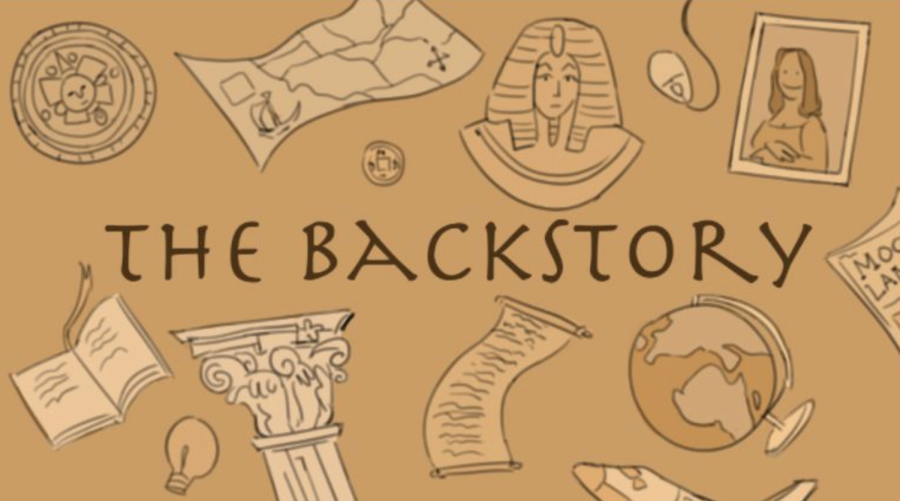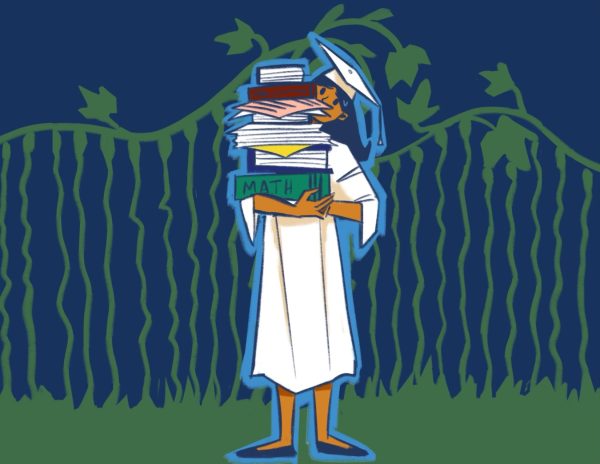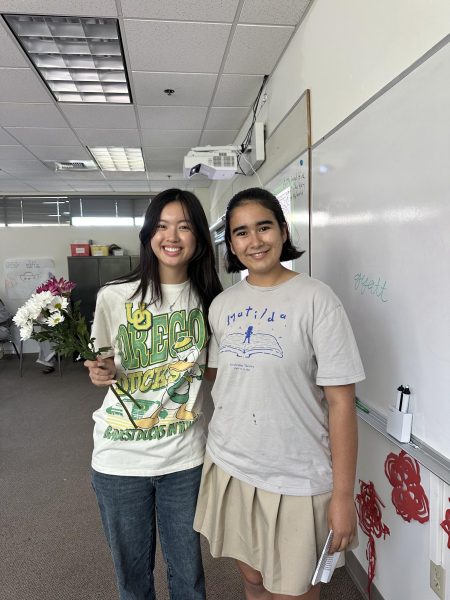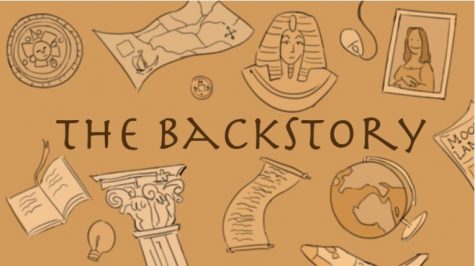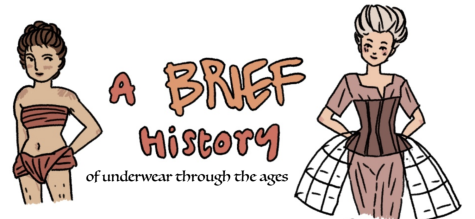The Backstory: The Flying Pirate From Westridge
The Backstory is a column celebrating fun and forgotten history!
“Lives of impact begin at Westridge,” read the pastel signs above Madeline Court as I impactfully shove a burrito into my mouth while rushing across campus each morning. Indeed. Florence Florentine “Pancho” Barnes, who graduated Westridge in 1919, certainly exemplified one definition of a life of impact. She smashed records—and sometimes private property—as one of the world’s first female pilots. With a penchant for leather jackets, cigars, and outrageously explicit language, her long list of rather unconventional accomplishments spanned piracy and spending a LOT of money on Jell-O.
From her birth in 1901, Florence Florentine Lowe was destined for greatness. Her grandfather, the excellently-named Thaddeus Sobieski Constantine Lowe, was an inventor and early pioneer in air travel. He made a name for himself during the Civil War as commander of the Union Army’s hot air balloon corps. Abraham Lincoln was convinced that the future of spycraft was in the skies, but the military wasn’t particularly interested in floating through space in tiny buckets. Feeling the peer pressure and wildly unaware that his troop of balloonists would pave the way for the modern Air Force, Lowe resigned from his post in embarrassment. Maybe he was just embarrassed about his weirdly large mustache. Either way, everything worked out for him after he made a fortune for his slightly less exciting innovations in the field of artificial gas and ice-making machines. Woot-woot. Lowe built himself a nice house in Pasadena and went on to construct the Mount Lowe Railway, which in itself is a neat story for another day. One very wealthy and not particularly notable generation later, Pancho Barnes was born.
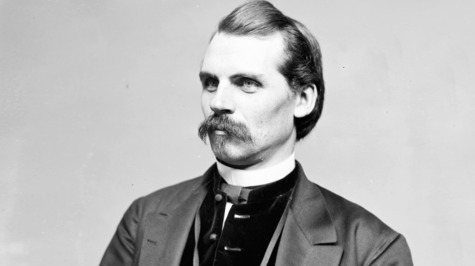
Barnes spent her childhood ignoring all the potential benefits of life as a super-rich heiress. Instead, she engaged in the slightly more problematic pursuits of frequently running away from home and flunking out of school after school. The only place that worked out for her was Westridge, and she successfully graduated in 1919. Yay! I’d attribute that accomplishment to Commons french fries because that’s why I’m going to successfully graduate from Westridge, but I think those only came along after her time. She inherited grandpa’s love of airplanes and was a passionate equestrian—Westridge’s OG horse girl.
After graduation, her family attempted to tame their troublemaking daughter by marrying her off to local reverend Rankin Barnes, with whom she had a son before she promptly became bored and went, “Nah.” She ran off to Mexico, disguising herself as a man and getting a job on a banana boat—unquestionably the best kind of boat. There was only one slight catch: the boat, as it turned out, was manned by revolutionaries attempting to smuggle guns into Panama. Barnes didn’t mind lending a hand. Illegally smuggling guns via water travel is technically piracy, which makes Barnes a pirate, and (ethical questions aside) I cannot stress enough how ridiculously cool that is. Put THAT on a poster-banner, Westridge.
It became a whole big thing when the Mexican government found out and seized the ship. Barnes, one of two crewmembers to successfully escape, rode back to California on horseback, narrowly escaping the authorities who chased her, action-movie style, all the way across the continent. It was during her pirate days that she adopted the nickname “Pancho,” which she continued to use for the rest of her life.
Crisis narrowly avoided, Barnes popped back to Pasadena just to say ‘sup to her husband, who didn’t prove particularly entertaining. It would be more fun, Barnes decided, to abandon him again and learn how to fly airplanes. At the time, air travel was still considered a new and dangerous technology. And women? In airplanes? Scandalous! For Barnes, this was a no-brainer. She called up a WWI pilot for advice and, only six hours (!!!) of formal training later, she was flying solo.
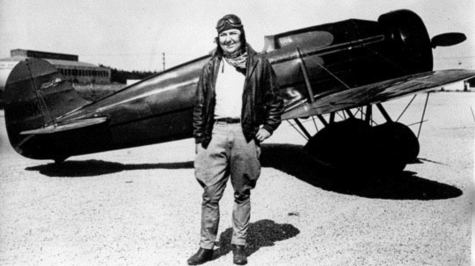
Barnes moved into the uber-expensive beach house her grandmother gave her as a gift and went into flying full-time. She made history (and a mess) in the 1929 Women’s Air Derby, the first all-female air race in the nation, by crashing her plane into a truck. Undaunted and determined, a year later, she beat Amelia Earhart’s world record as the fastest-flying woman on Earth.
Once you out-fly the most famous female pilot of, like, ever, there’s not much further to go in the world of competitive flying. Barnes turned her sights towards Hollywood and broke another glass ceiling (thankfully, only metaphorically) as the film industry’s first female stunt pilot. That in itself should be pretty darn impressive, but added to a resume that includes heiress, pirate, and world-record-breaker, is just like, *shrug*.
Crazy wealthy, unquestionably cool, and highly charismatic, Barnes became super popular with Old Hollywood celebrities. When she wasn’t soaring through the skies, Barnes partied hard with legendary photographer George Hurrell and a number of notable actors, who really liked her and/or her really nice house and perpetual willingness to pick up a bill.
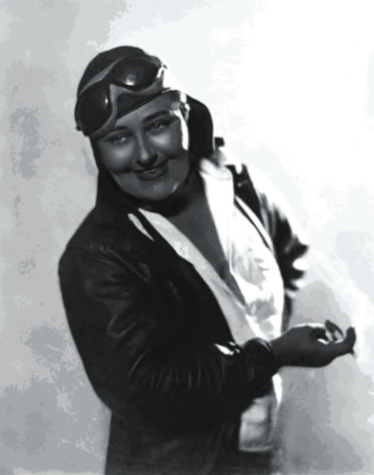
Fate and fortune nosedived when her marriage fell apart, her (really rich, famous) bestie sued her for refusing to refund his loan, and the Great Depression came along, which wasn’t super helpful. So she went North. Pretty much penniless, she sold the last of her assets—a really pricey Hollywood apartment—and put all her money into 180 acres of land in the middle of the Mojave Desert.
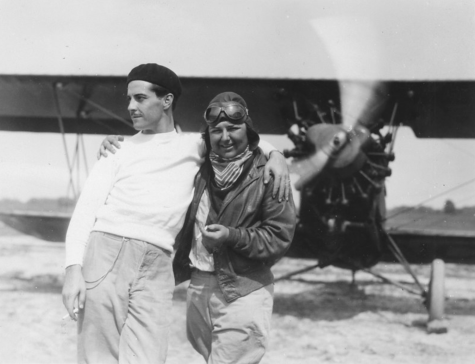
There she started an entrepreneurial streak, turning the property into a dude ranch called the Happy Bottom Riding Club. The hotel was frequented by local pilots and her famous friends from Hollywood. Her wild parties included barbecues, rodeos, and, in true pirate fashion, expensive treasure hunts for buried silver dollars. Whenever astronaut Buzz Aldrin or another pilot friend broke the sound barrier in the nearby skies, she’d treat them to a free steak dinner. She also installed a circular pool with a circular ramp on which she could ride her horse into the pool. Priorities, right?
But all wasn’t happy at the Happy Bottom Riding Club. Come WWII, the US Military had its eye on the Mojave as the site for a new Air Force Base, and they wanted to buy out Barnes’ land. Unhappy with their requested price, she countered. The military let slip a rumor that she was secretly running a brothel—gasp!—and she lost a bunch of business. She sued the Air Force in retaliation. After a long, heated trial, during which the Happy Bottom Riding Club burned down in a fire of *mysterious origins*, the military was like, “We want your land! It’s basically worthless anyway!” and she was like, “Screw you! My grandpa literally started the Air Force!” That argument proved convincing enough, and she ended up winning some nice money for all the inconvenience.
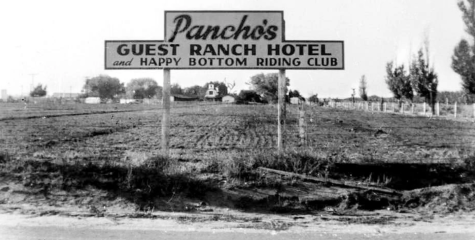
In 1952, Barnes remarried for a fourth and final time. Her two interim husbands aren’t particularly interesting (clearly, she agreed, and divorced them promptly), but she and her last husband, 19 years her junior, celebrated their union with four whole roasted pigs, 80 pounds of potato salad, 16 gallons of Jell-O, and a 50-pound wedding cake.
When they eventually divorced, probably over generational differences and whether red or orange is the superior Jell-O flavor (Red. Obviously.), Barnes moved to another little desert-y part of California called Cantil. She planned to open another Happy Bottom Riding Club-esque establishment but never saw that dream through. She died in a tiny shack in the desert in 1975, pretty much forgotten and with nothing to her name.
Barnes’ groundbreaking advances for women in air travel haven’t been totally lost to time. There have been a number of movies made and books written about her, and she’s made some pretty cool appearances in superhero lore. In fact, Captain Marvel’s favorite hangout in the 2019 film is called “Pancho’s Bar” as an homage to Barnes.
Pancho Barnes certainly takes the cake—all 50 pounds of it—as one of Westridge’s most infamously forgotten alumni. But if there’s one lesson to take away from her wacky life this Women’s History Month, it’s that you, too, can graduate from Westridge to change the world. And become a pirate.
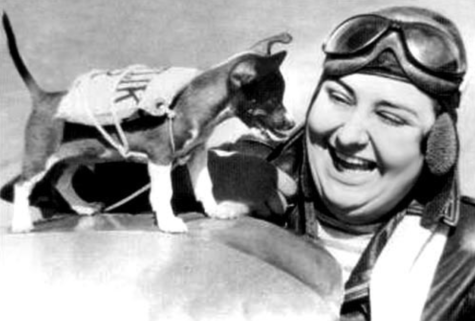

















![Dr. Zanita Kelly, Director of Lower and Middle School, pictured above, and the rest of Westridge Administration were instrumental to providing Westridge faculty and staff the support they needed after the Eaton fire. "[Teachers] are part of the community," said Dr. Kelly. "Just like our families and students."](https://westridgespyglass.org/wp-content/uploads/2025/03/dr.-kellyyy-1-e1748143600809.png)











































